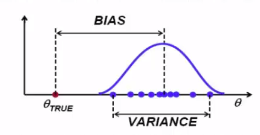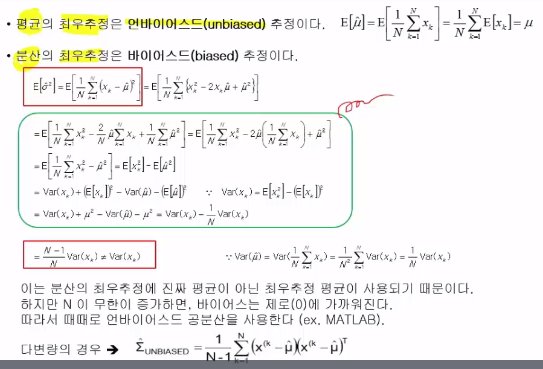This is note I wrote as I was take following lecture
http://www.kocw.net/home/search/kemView.do?kemId=1189957
================================================================================
* Summary for check the concept up.
* What you wonder is "probability density function"
* The data (which is assigned into each class) is generated via "probability density function"
* If you can know "probability density function",
then, you can make classify given data into best proper class
================================================================================
* So far, you just simply supposed that you know "probability density function"
* But you should ask more intrinsic question like
how you can know that "probability density function" itself?
* To do that, you should inference best proper "probability density function"
by using maximum likelihood estimation (which you learned from last lecture)
================================================================================
* But "inference" means "not precise one"
* So, you should measure how "infereced probability density function" is accurate
via values of "bias" and "variance"
================================================================================
* Bias is metric representing how near
between "inference probability density function" and "real probability density function"
 * $$$\theta_{\text{TRUE}}$$$: true $$$\theta$$$
* High bias, more false in your inference
* Curve means probability distribution of inferenced $$$\theta$$$
* Variance: how much of probability of inferenced $$$\theta$$$ varies
whenever $$$\theta$$$ varies
* Width of distribution
================================================================================
* Bias and variance have trade-off relationship
* High bias, low variance
================================================================================
* $$$\theta_{\text{TRUE}}$$$: true $$$\theta$$$
* High bias, more false in your inference
* Curve means probability distribution of inferenced $$$\theta$$$
* Variance: how much of probability of inferenced $$$\theta$$$ varies
whenever $$$\theta$$$ varies
* Width of distribution
================================================================================
* Bias and variance have trade-off relationship
* High bias, low variance
================================================================================
 * Inference parameter $$$\mu$$$ via MLE is "unbiased inference"
That is, inference value which is unbiased
* $$$E[\hat{\mu}] = E \left[ \frac{1}{N} \sum\limits_{k=1}^{N} x_k \right] = \frac{1}{N} \sum\limits_{k=1}^{N} E[x_k]=\mu$$$
* Inference parameter $$$\sigma^2$$$ via MLE is "biased inference"
That is, inference value which is biased
* $$$E[\hat{\sigma}^2] = E \left[ \frac{1}{N} \sum\limits_{k=1}^{N} (x_k-\hat{\mu})^2 \right] = E \left[ \frac{1}{N} \sum\limits_{k=1}^{N} (x_k^2 - 2x_k\hat{\mu}+\hat{\mu}^2) \right]$$$
* If you divide by "N-1", it reduces bias toward 0 (better inference)
especially when you have small N
================================================================================
* Inference parameter $$$\mu$$$ via MLE is "unbiased inference"
That is, inference value which is unbiased
* $$$E[\hat{\mu}] = E \left[ \frac{1}{N} \sum\limits_{k=1}^{N} x_k \right] = \frac{1}{N} \sum\limits_{k=1}^{N} E[x_k]=\mu$$$
* Inference parameter $$$\sigma^2$$$ via MLE is "biased inference"
That is, inference value which is biased
* $$$E[\hat{\sigma}^2] = E \left[ \frac{1}{N} \sum\limits_{k=1}^{N} (x_k-\hat{\mu})^2 \right] = E \left[ \frac{1}{N} \sum\limits_{k=1}^{N} (x_k^2 - 2x_k\hat{\mu}+\hat{\mu}^2) \right]$$$
* If you divide by "N-1", it reduces bias toward 0 (better inference)
especially when you have small N
================================================================================

